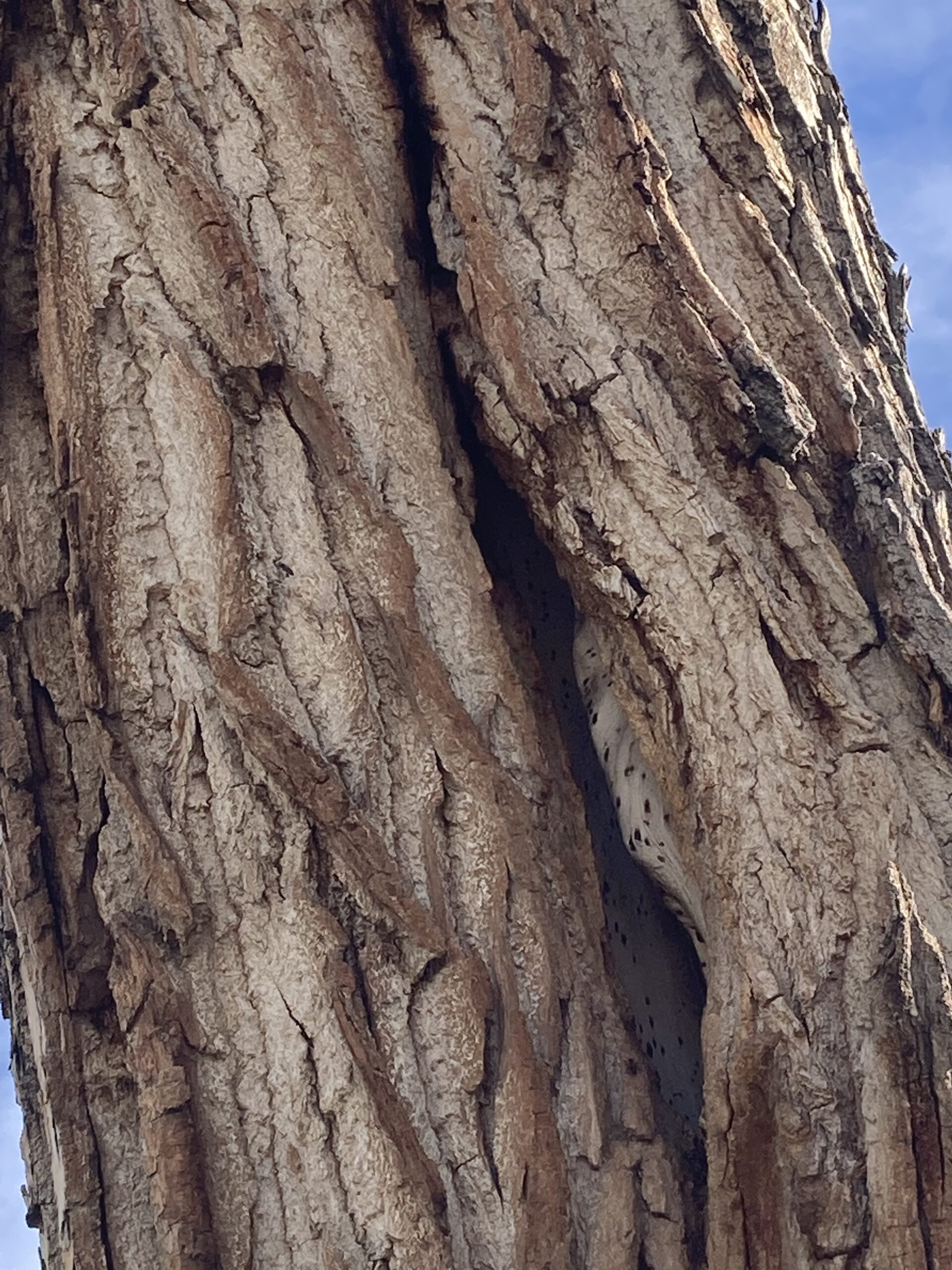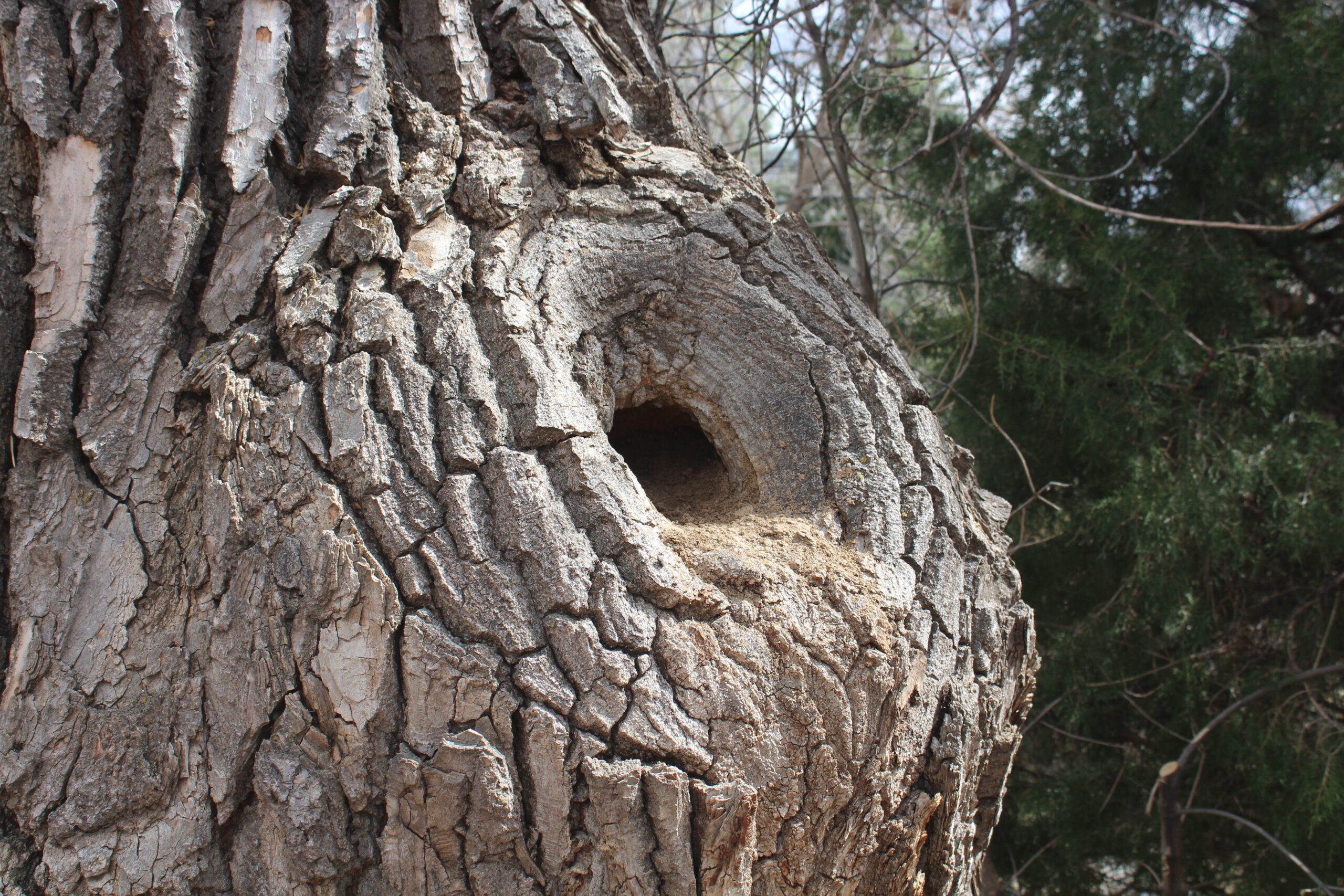What are habitat trees?
Also called snags, habitat trees are dead or dying trees that are left on the Canal to support the wildlife that live along the corridor. As they decompose, habitat trees act as nurseries and foraging grounds for a variety of insects, birds, and small mammals.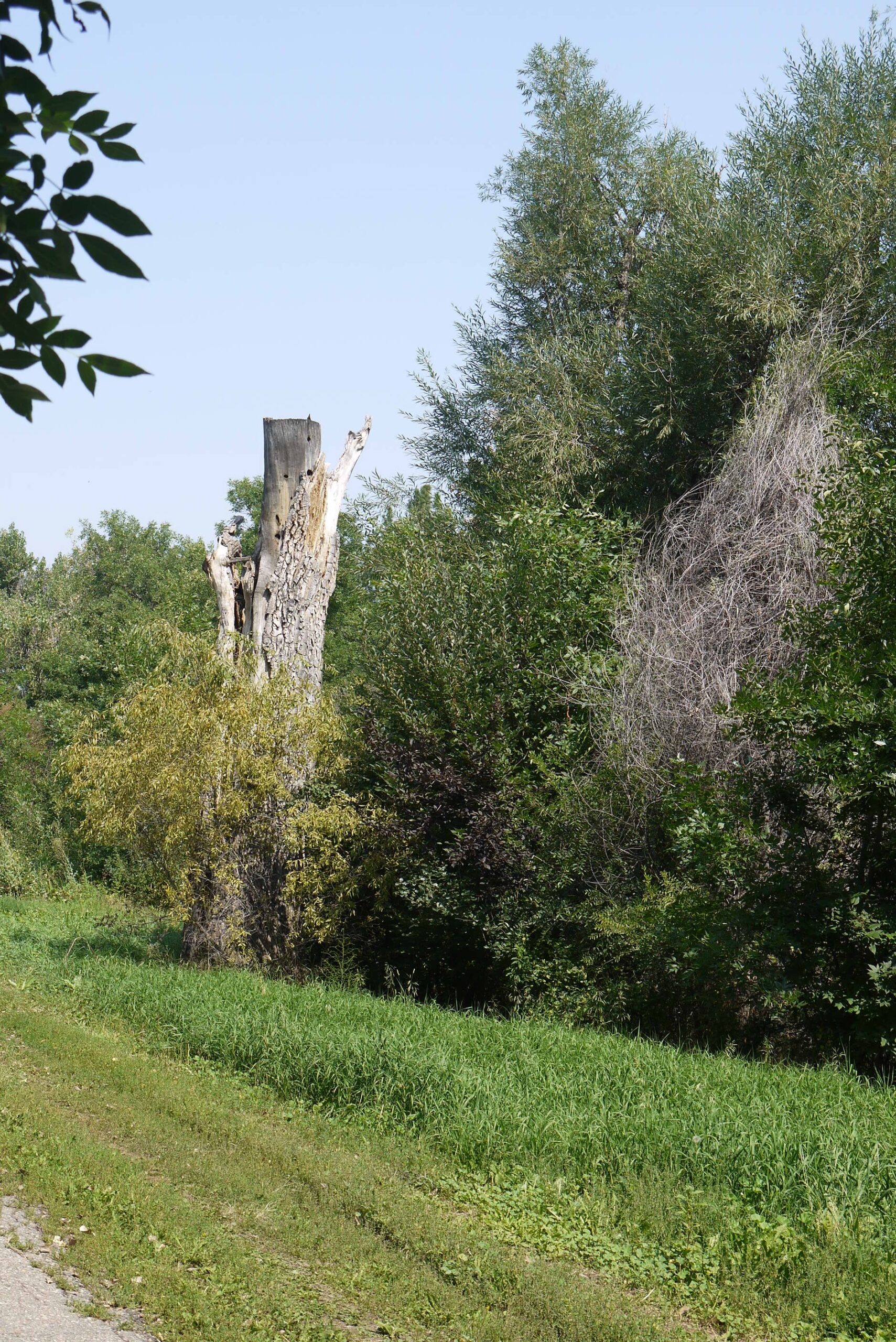
How do animals use habitat trees?
Denning & Nesting
Many animals call habitat trees home. Some birds, like downy woodpeckers, excavate holes in snags for nesting. Their chisel-like bills, strong necks, and sturdy skulls allow them to drill through bark and carve cavities within the decaying wood of a snag. Species that can carve nest holes are called ‘primary cavity nesters.’ Many species are not able to excavate their own holes and are referred to as ‘secondary cavity nesters.’ These animals rely on abandoned woodpecker holes or naturally formed cavities for nesting. Secondary cavity nesters found on the Canal include chickadees, nuthatches, wood ducks, great horned owls, squirrels, racoons, and many more! In total, 20 species of cavity nesting birds have been seen on the Canal corridor. By nesting within tree trunks, these critters are insulated from sweltering summer temperatures and freezing winter weather.
Foraging & Storing
Habitat trees also act as foraging grounds and food storages for wildlife. Many different kinds of insects, including beetles, spiders, and ants, lay eggs and live within habitat trees. Insects living inside deadwood are eaten by woodpeckers and other insectivorous birds. Even species that often forage on the ground, like northern flickers, rely on insects found in snags during winter months when snow covers the ground. Habitat tree also act as food caches for mammals, with squirrels and mice tucking food in crevices beneath loose bark and inside small cavities.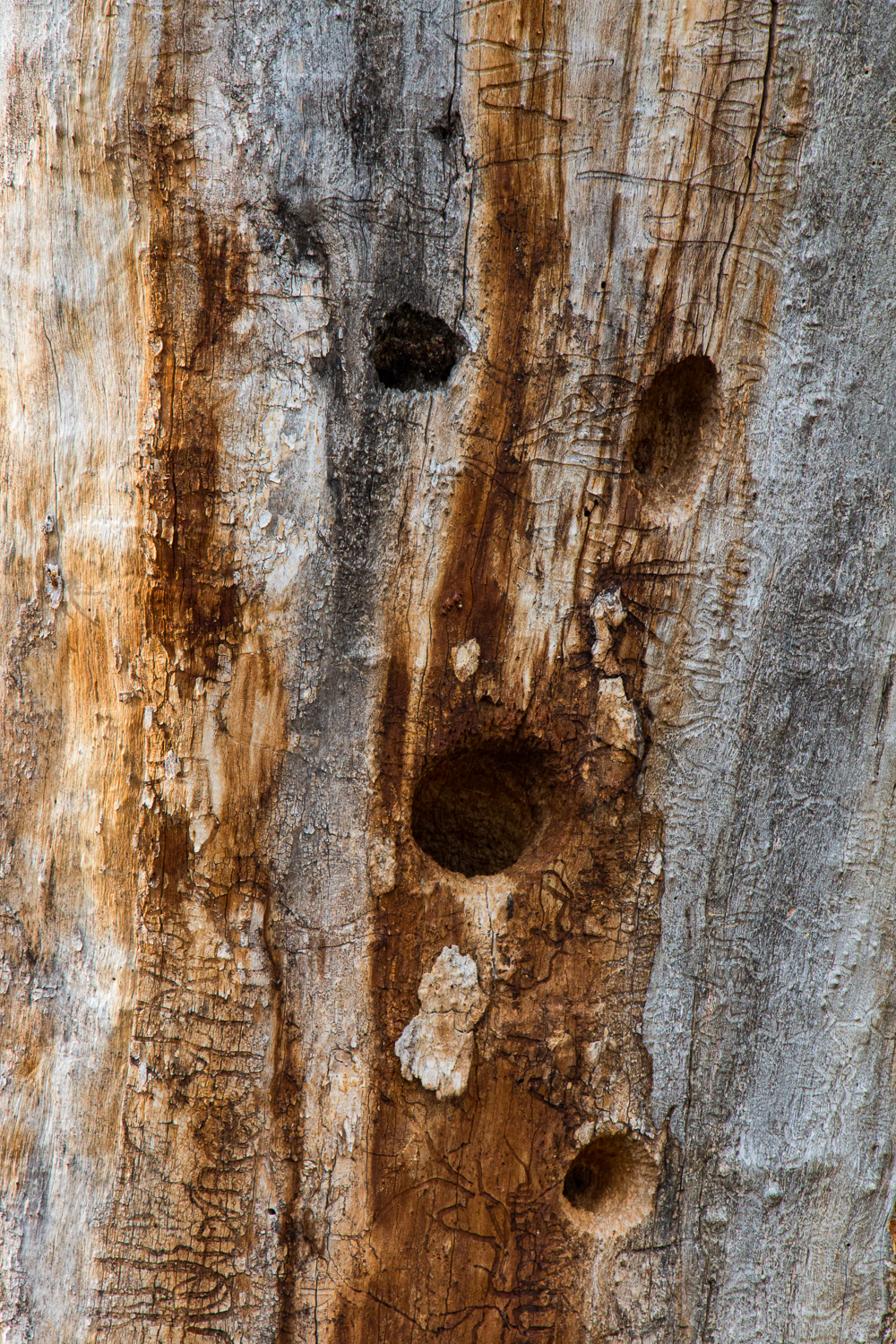
Perching & Singing
Habitat trees function as lookouts for large and small birds alike. Tall snags are preferred by raptors, like bald eagles and red-tailed hawks, as they offer great vantage points from which to hunt. Smaller habitat trees are used as singing and resting perches by songbirds, including broad-tailed hummingbirds and western kingbirds.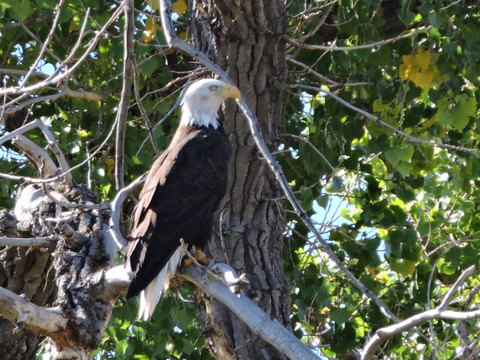
Which trees are preserved for habitat?
As the varied landscapes of the Canal evolve with changing times and limited water, partners in the Canal Collaborative are working together to ensure the Canal continues to support the region’s wildlife. The practice of preserving snags on the corridor allows trees to continue to support the Canal’s ecological function even after they have died and is in keeping with The Plan for the High Line Canal which supports the community’s vision to keep the Canal natural. Some snags occur naturally as trees along the Canal reach the end of their lifespans. Other trees on the Canal are intentionally pruned and preserved as habitat trees. If a tree is determined to be in need of maintenance, arborists evaluate if a full removal is necessary or if a portion of the tree can be left standing for habitat. While reduced in size, trees that have had their upper limbs removed still provide excellent habitat for wildlife.